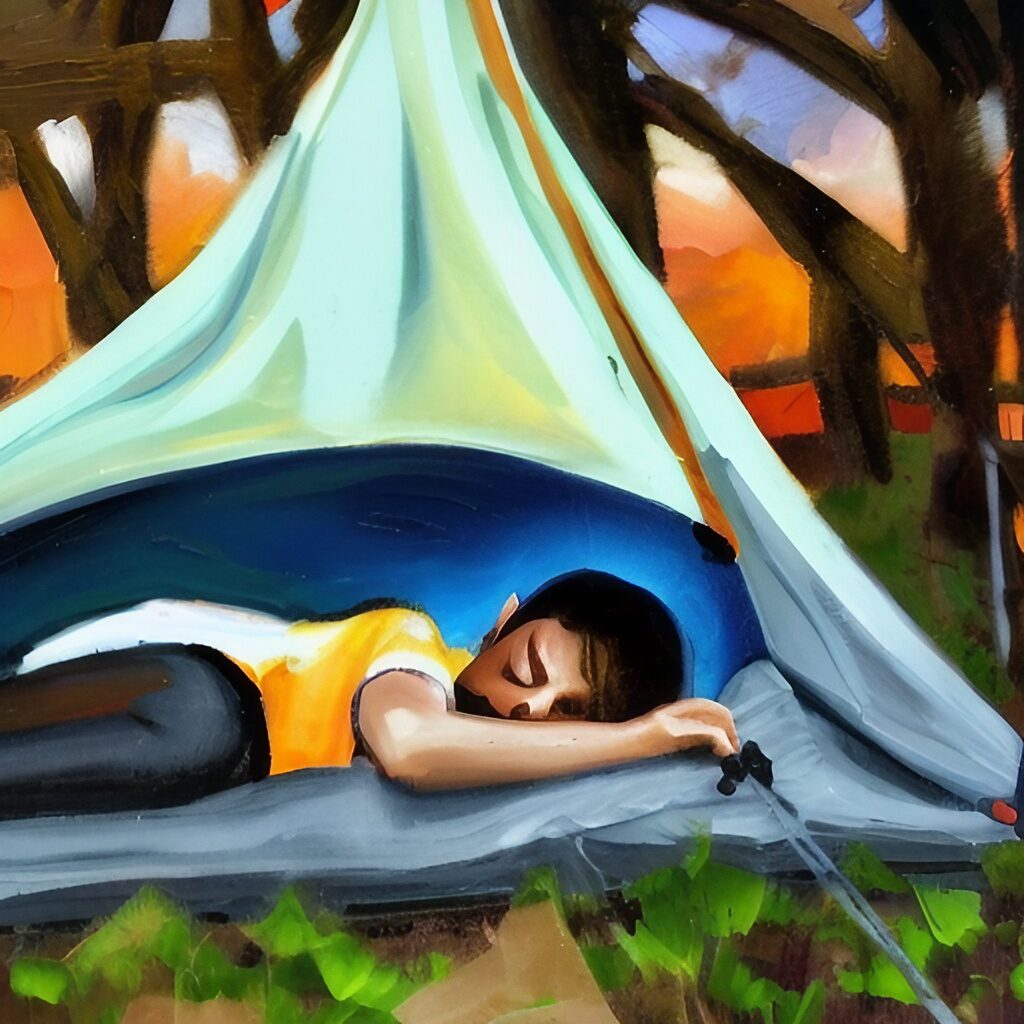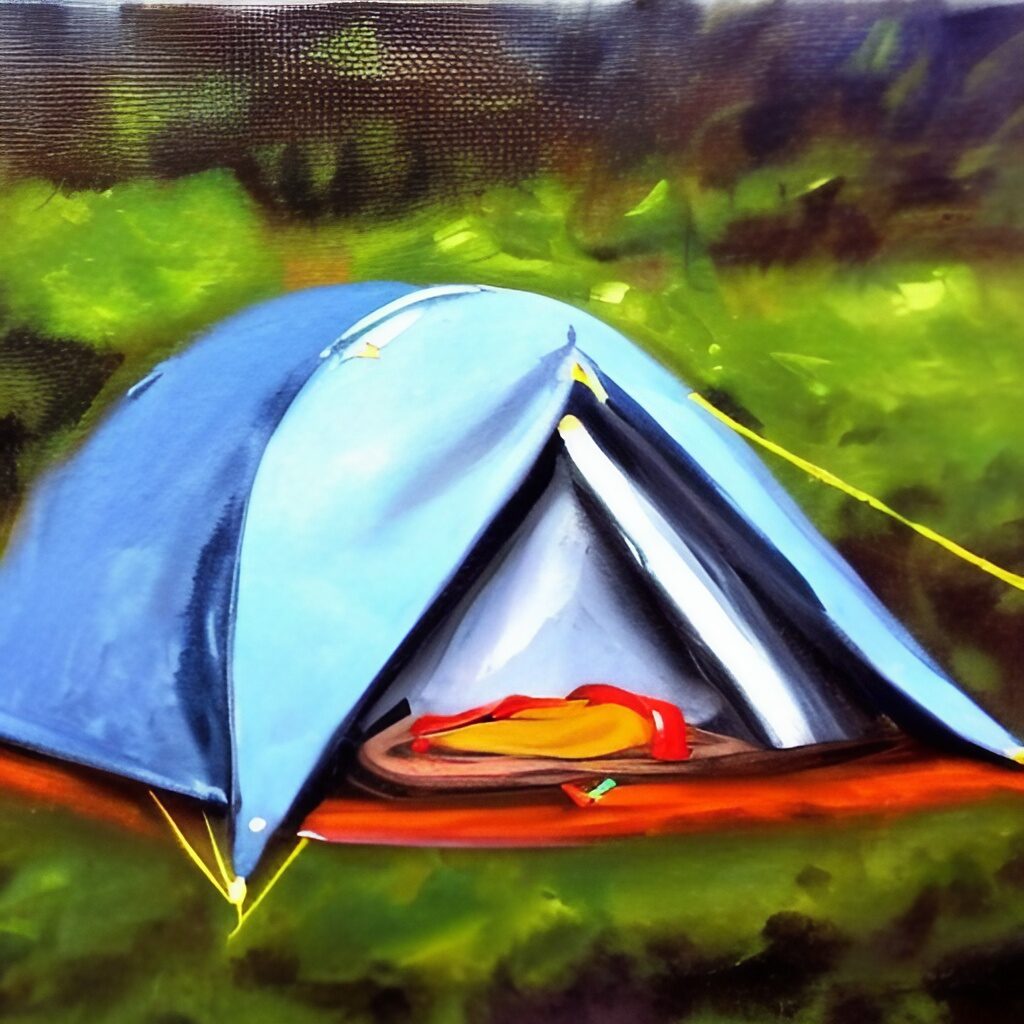
In this article, we will discuss two essential items for camping and backpacking – sleeping bags vs sleeping pads.
Are sleeping pads worth it?
Yes, they are.
Imagine this…
A bone-chilling night inside a tent when your sleeping bag isn’t enough to provide the right level of warmth and comfort. You yearn for a bit of extra warmth.
This is where the sleeping pad comes in. Not only does it add to the comfort factor, but it also adds to the overall insulation that’s essential for keeping you warm.
- What is a Sleeping Bag? – Sleeping Bags vs Sleeping Pads
- What is a Sleeping Pad? – Sleeping Bags vs Sleeping Pads
- Tent Sleeping System: How the Sleeping Bag and Sleeping Pad Work Together – Sleeping Bags vs Sleeping Pads
- Alternatives to Sleeping Bags – Sleeping Bags vs Sleeping Pads
- When You Can Leave the Sleeping Pad at Home – Sleeping Bags vs Sleeping Pads
- How to Choose the Best Sleeping Bag – Sleeping Bags vs Sleeping Pads
- How to Choose the Best Sleeping Pad – Sleeping Bags vs Sleeping Pads
- Conclusion – Sleeping Bags vs Sleeping Pads
- Frequently Asked Questions – Sleeping Bags vs Sleeping Pads
- 1. What Makes a Sleeping Bag Different From a Sleeping Pad? – FAQs
- 2. When Camping or Backpacking, Do I Need Both a Sleeping Bag and a Sleeping Pad? – FAQs
- 3. How Do Sleeping Bags Provide Warmth and Insulation? – FAQs
- 4. What Factors (e.g., Temperature Rating, Material) Should I Consider When Purchasing a Sleeping Bag? – FAQs
- 5. When Sleeping Outside, How Do Sleeping Pads Provide Cushioning and Support? – FAQs
- 6. What Kinds of Sleeping Pads are There (for Example, Self-Inflating, Foam)? – FAQs
- 7. Can I Substitute a Yoga Mat or Another Improvised Option for a Proper Sleeping Pad? – FAQs
- 8. Is There Any Disadvantage to Using Only a Sleeping Bag or a Sleeping Pad? – FAQs
- 9. How Can I Ensure the Longevity of My Sleeping Bag and/or Sleeping Pad? – FAQs
- 10. Which Option (Sleeping Bag vs Sleeping Pad) is Best Suited for Different Camping Situations (for Example, Summer vs Winter Camping)? – FAQs
What is a Sleeping Bag? – Sleeping Bags vs Sleeping Pads
A sleeping bag has an insulated lining in which a person can sleep. Generally, it comes with a zip and a drawstring to tighten it around your head. The bag can trap the warm air around your body and keep you warm.
What is a Sleeping Pad? – Sleeping Bags vs Sleeping Pads
A sleeping pad is a lightweight pad that can be made from closed-cell foam or filled with air. The pads offer an additional layer of comfort and insulation from the ground.
A sleeping bag won’t provide protection from cold ground. That’s why using a sleeping pad is essential.
Tent Sleeping System: How the Sleeping Bag and Sleeping Pad Work Together – Sleeping Bags vs Sleeping Pads
A basic sleeping system inside the tent consists of a sleeping platform and bag. The sleeping platform or pad stays between the sleeping bag and the ground to provide additional insulation.
Also, you can wear heavy clothing inside the bag while sleeping to improve the warmth factor. Sleeping bag temperature ratings are given by considering that the user is wearing a base layer of clothing.
When you sleep directly on the ground, your body will lose heat quickly to the cold ground by conduction. Your body weight compresses the sleeping bag insulation, bringing you closer to the cold ground. This results in quick heat loss. Using an insulating pad can prevent that.
Moreover, it also offers an extra cushioning layer and adds to the comfort factor. A thick pad can make a big difference when you have to pitch your tent on rough, uneven ground.
Note sleeping bags come with temperature ratings. But the temperature rating of sleeping bags also depends on the R-value or the insulating ability of the sleeping pad.
The higher the R-value, the higher the level of overall insulation. Since manufacturers follow a uniform method for designating R-values, you can easily compare pads from different brands.
For winter camping, the R-value of the pads should be 4.0 or more. For summer camping, it can be between R1 and R2.
To get the best performance from your sleeping bag, you need to pair it with the right sleeping pad.
Lastly, we suggest adding a pillow to complete your sleep system. While it doesn’t add to the insulation, a pillow can significantly affect the overall comfort levels.
Alternatives to Sleeping Bags – Sleeping Bags vs Sleeping Pads
We wouldn’t suggest hiking in cold temperatures without a sleeping bag. In areas where night temperatures drop to 50 degrees Fahrenheit or below, hypothermia can be a danger.
But you can leave the sleeping bag behind for short summer camping trips with hardly any chance of the temperatures dropping. In such cases, there are some alternatives you can choose from.
Travel Liners – Alternatives to Sleeping Bags
Liners can be used inside a sleeping bag and also independently. They will help to keep you warm without being heavy. Besides, they are cheap and can be washed easily.
Quilts – Alternatives to Sleeping Bags
Quilts can work well in relatively cold temperatures. Some quilts are shaped like a blanket and are lightweight. Other quilts are shaped like sleeping bags and designed specifically for backpacking.
Backcountry Bed – Alternatives to Sleeping Bags
These are ultra-comfortable bags that come without zippers and drawstrings. They have a comforter-like closure system, and the interiors are spacious enough to offer bed-like comfort.
Blanket and Pillow – Alternatives to Sleeping Bags
This is a great alternative for car camping trips in mild to moderate conditions. Make sure that they offer the right level of insulation and are waterproof.
Of course, there are more options, so feel free to check out our detailed article on Sleeping Bag Alternatives.
When You Can Leave the Sleeping Pad at Home – Sleeping Bags vs Sleeping Pads
If you are not accustomed to sleeping on hard ground, a sleeping pad can make a big difference in comfort. That said, whether you need a sleeping pad for a backpacking trip depends on the temperature.
Since sleeping pads don’t offer much airflow, you can avoid them in hot and humid conditions.
Another option is to use air mattresses. But they are bulky and best suited for car camping trips.
When it comes to staying warm, there’s no alternative to a sleeping pad with the right R rating.
How to Choose the Best Sleeping Bag – Sleeping Bags vs Sleeping Pads
Here’s a quick look at the factors you need to consider before picking a sleeping bag.
Temperature Rating – How to Choose the Best Sleeping Bag
Without a doubt, this is the most important aspect to consider. Sleeping bags come with a comfort rating and an extreme limit rating.
Comfort ratings are temperatures in which a bag will keep an average sleeper warm. The limit rating is the lowest temperature at which the bag will keep you warm.
Always choose a bag with a lower rating than the lowest temperatures you will likely encounter. If the conditions are warmer, you can open the bag to feel comfortable.
Insulation Type – How to Choose the Best Sleeping Bag
Sleeping bags with synthetic insulation are cheaper and can be cleaned easily.
However, down feathers offer a better warmth-to-weight ratio and keep you warmer. They can also be packed down to a smaller size. But down absorbs the mixture easily and takes longer to dry out. Down bags are also more expensive.
Weight – How to Choose the Best Sleeping Bag
The weight of a sleeping bag depends on its shape, size, and type of insulation. Mummy sleeping bags with a slim cut are lighter than barrel-shaped or rectangular bags.
Next, you need to consider the insulation fill weight. The more insulation a bag packs, the more warmth it delivers. However, extra insulation will also make the bag heavier.
Fit – How to Choose the Best Sleeping Bag
Basically, sleeping bags are available in three sizes.
Standard or unisex sleeping bags are usually designed to fit the shape of a man. Women’s sleeping bags are designed to fit an average-sized woman.
Beyond that, there are kid’s sleeping bags that are smaller in size.
How to Choose the Best Sleeping Pad – Sleeping Bags vs Sleeping Pads
Time to look at a few tips about choosing the best sleeping pad.
The Type of Pad – How to Choose the Best Sleeping Pad
Sleeping pads can be made from closed-cell foam or inflated by air. There are also self-inflated pads that combine foam and air.
The closed-cell pads are not only cheap but are also close to being indestructible. While they won’t pack down small, the tiny air pockets within the foam provide good insulation. Also, they have no chance of deflating in the middle of the night.
Air pads are inflated by a foot pump or simply blowing into it. They are compact, lightweight, and offer a high degree of comfort.
They can be up to three inches in thickness. With more thickness, you get better insulation. On the downside, they are more expensive and can easily puncture by sharp edges.
Self-inflating pads combine air and open-cell foam. Once you open the valve, air rushes in automatically to fill the pad. In most cases, you must add a few breaths to adjust the firmness.
These pads combine the best of both worlds and are more durable than air pads. On the other hand, they are heavier and more expensive.
Type of Use – How to Choose the Best Sleeping Pad
For car camping trips, carrying a thicker and heavier pad isn’t an issue. However, when it comes to multi-day backpacking trips, you need a lightweight pad that packs down to a small size.
R-Value – How to Choose the Best Sleeping Pad
A pad with a higher R-value will help in keeping you warmer. As mentioned, you need to match the pad’s R-value with the sleeping bag’s temperature rating for the best results.
Size – How to Choose the Best Sleeping Pad
Most regular-size sleeping pads are around six feet in length. So they can easily insulate the body of an average person. If you don’t mind your legs getting cold, a 3/4-length pad is a shorter and lighter option.

Conclusion – Sleeping Bags vs Sleeping Pads
In conclusion, sleeping bags and pads are essential for a restful night’s sleep while camping or backpacking. Sleeping bags offer insulation and warmth from the cold ground, whereas sleeping pads provide cushioning and support to help prevent soreness and discomfort.
When deciding between the two options, consider factors such as your sleeping bag’s temperature rating, the thickness and material of your sleeping pad, and any special needs you may have (such as extra support for back pain). Furthermore, it is worthwhile to consider investing in high-quality equipment that will last longer and perform better over time.
Ultimately, whether you use a sleeping bag, a sleeping pad, or both will be determined by your preferences and needs. Some campers prefer ultralight backpacking setups with minimal gear, whereas others value comfort above all else. Regardless of your approach, taking the time to research different options and invest in quality gear can make or break a good night’s sleep on your next camping trip.
Frequently Asked Questions – Sleeping Bags vs Sleeping Pads
1. What Makes a Sleeping Bag Different From a Sleeping Pad? – FAQs
A sleeping bag is an insulated covering that wraps around your body while you sleep, providing warmth and weather protection. A sleeping pad is an inflatable or foam cushion that fits beneath your sleeping bag to provide extra insulation and cushioning.
2. When Camping or Backpacking, Do I Need Both a Sleeping Bag and a Sleeping Pad? – FAQs
While having both is not strictly necessary, it is highly recommended because they work together to provide optimal comfort and insulation.
3. How Do Sleeping Bags Provide Warmth and Insulation? – FAQs
Sleeping bags are usually made of insulating materials like down or synthetic fibers, which trap warm air against your body while blocking out cold air.
4. What Factors (e.g., Temperature Rating, Material) Should I Consider When Purchasing a Sleeping Bag? – FAQs
When selecting a sleeping bag, consider the temperature rating (the lowest temperature at which you will stay warm), material (such as down or synthetic fill), shape (mummy vs rectangular), weight, and overall quality.
5. When Sleeping Outside, How Do Sleeping Pads Provide Cushioning and Support? – FAQs
Sleeping pads cushion your body by filling in the gaps between your body and the ground beneath you. They also provide support by conforming to your body’s contours and evenly distributing weight.
6. What Kinds of Sleeping Pads are There (for Example, Self-Inflating, Foam)? – FAQs
Sleeping pads come in a variety of styles, including self-inflating pads, foam pads, air mattresses, and hybrid options that combine different materials.
7. Can I Substitute a Yoga Mat or Another Improvised Option for a Proper Sleeping Pad? – FAQs
While other items, such as yoga mats or blankets, can technically be used in place of a proper pad, they will not provide adequate insulation or support in most camping situations.
8. Is There Any Disadvantage to Using Only a Sleeping Bag or a Sleeping Pad? – FAQs
Using only one can cause discomfort due to a lack of insulation or cushioning against the ground.
9. How Can I Ensure the Longevity of My Sleeping Bag and/or Sleeping Pad? – FAQs
Proper care entails storing them in dry conditions when not in use, cleaning them according to the manufacturer’s instructions, avoiding sharp objects that could puncture them, and handling them with care while in use.
10. Which Option (Sleeping Bag vs Sleeping Pad) is Best Suited for Different Camping Situations (for Example, Summer vs Winter Camping)? – FAQs
Both are essential for all camping situations, but different ratings may be required depending on the season – thicker/more insulating gear may be required in colder weather, while lighter gear may suffice in warmer weather.














